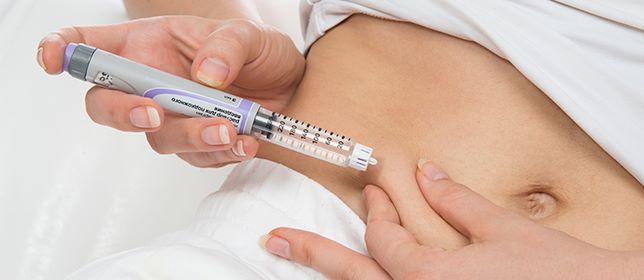- Bone Health
- Immunology
- Hematology
- Respiratory
- Dermatology
- Diabetes
- Gastroenterology
- Neurology
- Oncology
- Ophthalmology
- Rare Disease
- Rheumatology
Study Evaluates Insulin Availability in the Philippines
There is low insulin availability in the Philippines and investigators recommend policy and regulatory reviews.
Investigators reporting on insulin availability in the Philippines said affordability and access are inadequate for many in the Southeast Asia country and recommended measures for improvement, including:
- Bargaining with manufacturers for lower prices
- Setting priorities for supply
- Use of more biosimilars to reduce costs
Authors of the study, presented at 2021 ISPOR Virtual, said “insulins were affordable in the public sector, but access was affected by low availability.” Private-sector patients faced higher costs compounded by limited competition. Policy and regulatory reviews to improve insulin availability would help, investigators said.
Insulin pricing, availability, and affordability were reviewed in 6 regions of the Philippines following the imposition of a January 2019 value-added tax exemption policy. Insulin prices were compared with international reference prices (IRPs) and affordability was based on the number of days’ wages needed for the “lowest-paid unskilled government worker” to purchase a monthly supply of insulin (10 mL, 100 IU/mL).
The public sector was defined as public hospitals and medicine outlets; and the private sector, private hospitals and retail pharmacies. Mean availability of insulin originator products and biosimilars was 2.8% and 50.0%, respectively, in the public sector and 63.9% and 61.1% in the private sector.
LPG metaformin was the only insulin that met the World Health Organization target of 80% availability in both sectors, and originator versions of most insulins and biosimilars, along with analogue insulins, were not available in the public sector, except for human short-acting and analogue long-acting insulins (2.8% availability in both cases).
Sources of Insulin
All insulin products included in the study were imported, and 3 companies (Eli Lilly, Sanofi-Aventis, Novo Nordisk) accounted for 65% of those products, authors wrote. Vials were the most common form of insulin available (55%), followed by prefilled pens (41.7%) and cartridges (3.2%). Vials were in general cheaper than pens and cartridges, and biosimilars were cheaper than originator products, according to findings.
Insulin in the private sector was 1.05 to 3.66 times more costly than IRPs; in the public sector, prices were uniformly less costly than the IRP. “Purchasing 10 mL of human and analogue insulin in the private sector would need 2 to 4 days’ and 4 to 8 days’ wages, respectively,” the authors wrote.
Although affordability was based on wages of the lowest-paid government workers, the authors noted that “a significant portion of the population earns less than the lowest-paid government worker.”
Addressing Patent Abuse, Reimbursement Models Key to Sustainable Biosimilar Market
April 25th 2025Sonia T. Oskouei, PharmD, emphasized strategies to streamline regulations and evolve to overcome barriers and expand the availability of cost-effective biosimilar treatments across more therapeutic areas.
Will the FTC Be More PBM-Friendly Under a Second Trump Administration?
February 23rd 2025On this episode of Not So Different, we explore the Federal Trade Commission’s (FTC) second interim report on pharmacy benefit managers (PBMs) with Joe Wisniewski from Turquoise Health, discussing key issues like preferential reimbursement, drug pricing transparency, biosimilars, shifting regulations, and how a second Trump administration could reshape PBM practices.
Decade of Biosimilars Yields $36 Billion in Savings and Strengthens Supply Chain
April 24th 2025Dracey Poore, MS, director of biosimilars and emerging therapies at Cardinal Health, highlighted that biosimilars saved $36 billion over the last decade by improving patient access and the supply chain, but continued education and a robust pipeline are crucial for future growth.
Biosimilars Policy Roundup for September 2024—Podcast Edition
October 6th 2024On this episode of Not So Different, we discuss the FDA's approval of a new biosimilar for treating retinal conditions, which took place in September 2024 alongside other major industry developments, including ongoing legal disputes and broader trends in market dynamics and regulatory challenges.
President Trump Signs Executive Order to Bring Down Drug Prices
April 16th 2025To help bring down sky-high drug prices, President Donald Trump signed an executive order pushing for faster biosimilar development, more transparency, and tougher rules on pharmacy benefit managers—aiming to save billions and make meds more affordable for everyone.
How State Substitution Laws Shape Insulin Biosimilar Adoption
April 15th 2025States with fewer restrictions on biosimilar substitution tend to see higher uptake of interchangeable insulin glargine, showing how even small policy details can significantly influence biosimilar adoption and expand access to more affordable insulin.

